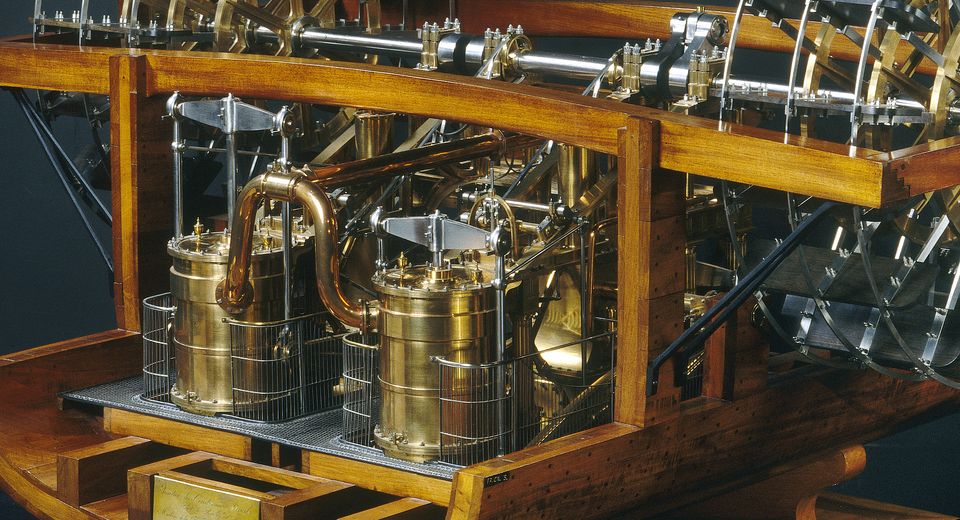Steam engine of the wheeled corvette le Sphinx
Paris
Model workshop of the arsenals, Rochefort
This model steam engine, used on board the French Navy's first regular steamship, is an invaluable testimony to the history of navigation at the time of the Industrial Revolution.
The Industrial Revolution in the 19th century marked the advent of the steam engine, which revolutionised maritime transport: for the first time, sailors were no longer entirely dependent on the vagaries of the wind, and could rely on an autonomous propulsion force. The model of the Sphinx steam engine is an important milestone in this period of invention and technical progress. It is one of a series of scale models made by the model workshop at Rochefort arsenal for use in shipyard training workshops.
The Sphinx was the French Navy's first regular sailing and steam ship, built in 1829 at the Rochefort arsenal by the engineer Jean-Baptiste Hubert. The use of steam enabled her, in 1833, to tow the Luxor to Paris; a ship specially designed to transport the Luxor obelisk from the banks of the Nile to the Place de la Concorde. The 160-horsepower steam engine was built by a Liverpool company, W. Fawcett, the English being major producers of boilers and steam engines at the time. This outrigger engine powered two large paddlewheels on the port and starboard sides of the hull, enabling the ship to reach a constant speed of around 7 knots (12 km/h). Marine steam engines differed from land-based engines, particularly locomotives, in that they had a condenser to recycle the steam produced using seawater.
Collection highlight
Discover the must-see works at the Musée national de la Marine.

